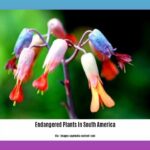judulcuy: Unlock Paradise Tree Benefits: A Comprehensive Farming Guide
bahasaart: in english us
formatart: informational article with a strong instructional guide element
kabeh: “Considering a sustainable addition to your farm? Discover the paradise tree (Simarouba glauca)! This versatile tree offers edible oil, durable wood, and improved soil health. This guide provides insights into cultivation, harvesting, and a comparison with other options. We’ll examine the science behind its benefits, enabling informed decisions for your farm. Learn to grow paradise trees effectively, avoid common pitfalls, and explore community-tested applications – all explained simply!”
Unlock Paradise Tree Benefits: A Comprehensive Farming Guide
Considering a sustainable addition to your farm? Discover the paradise tree (Simarouba glauca)! This versatile tree offers edible oil, durable wood, and improved soil health. This guide provides insights into cultivation, harvesting, and a comparison with other options. We’ll examine the science behind its benefits, enabling informed decisions for your farm. Learn to grow paradise trees effectively, avoid common pitfalls, and explore community-tested applications – all explained simply!
Paradise Tree: A Comprehensive Guide to Sustainable Farming
Simarouba glauca cultivation techniques
The paradise tree (Simarouba glauca) is gaining traction in sustainable agriculture, and rightfully so. This resilient, fast-growing tree adapts to diverse soil types and dry conditions. It presents a multitude of benefits that could transform farming practices. Let’s explore the reasons behind this growing enthusiasm.
The Paradise Tree: A Versatile Asset for Sustainable Farming
Diverse applications of Simarouba Glauca
More than just an attractive tree, the paradise tree offers many potential uses. Its seeds yield edible oil with promising biofuel applications, offering a cleaner alternative to traditional fossil fuels. The tree’s wood is strong and adaptable, making it ideal for construction and various other uses. Furthermore, it enhances soil quality and prevents erosion, contributing to a more resilient and sustainable farming ecosystem.
However, like any promising solution, the paradise tree presents some challenges. Harvesting the fruit can be labor-intensive, requiring innovative solutions. Its shallow root system necessitates careful planting strategies. While traditional medicine utilizes parts of the tree, more scientific validation is needed. These challenges highlight the importance of thorough research and strategic planning to fully leverage its potential.
Practical Guide: Cultivating the Paradise Tree
Step-by-step Simarouba Glauca cultivation guide
Interested in cultivating paradise trees? This step-by-step guide will help you get started:
Step 1: Location Selection: Choosing the right location is crucial. Select a site with well-drained soil that is rich in organic matter. Due to the tree’s shallow root system, avoid planting near structures or infrastructure to prevent potential damage. Paradise trees thrive in USDA zones 9B through 11.
Step 2: Initial Planting and Propagation: Paradise trees can be propagated via seeds, grafting, or tissue culture. For seed propagation, collect ripe fruits (typically in April and May), dry them in the sun for about a week, separate the skin, and plant the seeds in plastic bags to cultivate saplings. Saplings that are 2-3 months old are ready for transplanting.
Step 3: Soil and Water Management: While paradise trees are drought-tolerant, regular watering during the initial growth phase is essential. Mulching around the base of the tree helps retain moisture and suppress weed growth. Conduct regular soil tests to identify any nutrient deficiencies and amend the soil accordingly.
Step 4: Harvesting and Processing: Efficient harvesting ensures maximum yield. Consider investing in appropriate harvesting tools and techniques to streamline the process. The fruits are typically harvested when they turn dark purple. After harvesting, the fruits are processed to extract the valuable oil from the seeds.
Step 5: Exploring the Possibilities: The oil extracted from paradise tree seeds has diverse applications. Beyond biofuel, it can be used in cosmetics, pharmaceuticals, and even as a cooking oil. The wood can be utilized for furniture making, construction, and other applications.
Paradise Tree: Balancing the Advantages and Disadvantages
Advantages and disadvantages of paradise tree farming
Here is a balanced examination of the advantages and disadvantages:
| Advantages | Disadvantages | Strategies for Success |
|---|---|---|
| Rapid growth, drought resistance | Messy fruit harvest, shallow root system | Implement efficient harvesting technologies, strategic site selection |
| Versatile wood, valuable oil | Limited scientific validation of medicinal uses | Support ongoing research, collaborate with scientists for rigorous clinical trials |
| Enhances soil health, prevents erosion | Potential for allelopathy (requires further research) | Determine optimal planting densities, employ intercropping strategies to minimize negative effects |
A Collaborative Vision for the Future
Collaborative initiatives for Simarouba Glauca Development
The paradise tree holds significant potential for a more sustainable agricultural future. To realize this potential, a collaborative approach is essential. Farmers, scientists, and policymakers all have a role to play. Continued research is needed to address uncertainties and explore further applications. Sharing knowledge and collaborating can unlock the tree’s full potential, paving the way for a more resilient and sustainable agricultural landscape. This journey requires patience and dedication, but the rewards—a healthier planet and more robust food systems—are well worth the effort.
Harnessing Simarouba Glauca for Biofuel Production
Biofuel production through paradise tree cultivation
- Simarouba glauca, or the Paradise Tree, presents a sustainable pathway for biofuel production.
- It thrives in challenging, arid climates, making it suitable for regions with limited water resources.
- Successful cultivation entails strategic planting, efficient seed processing, and effective oil extraction methods.
Understanding Simarouba Glauca
Sustainable agriculture with Simarouba Glauca
Simarouba glauca is more than just an aesthetically pleasing tree; it’s a potentially groundbreaking resource for sustainable agriculture. This drought-resistant species flourishes in marginal lands, offering a valuable source of biofuel while simultaneously enhancing soil health. But how can we fully leverage its potential? Let’s investigate the cultivation of Simarouba glauca for biofuel production. Did you know that its seed oil content ranges from 55% to 65%?
Site Selection and Preparation
Ideal site conditions for paradise tree
Selecting the right location is of utmost importance. Simarouba glauca thrives in well-drained soil with abundant sunlight. Thoroughly assess your land considering soil type, drainage capabilities, and available sunlight. Improved soil preparation encourages robust initial growth. Prior to planting, consider tilling the soil to improve drainage and aeration. Conduct a soil test to determine the pH level; Simarouba glauca prefers a slightly acidic to neutral pH (6.0-7.0).
Planting and Spacing
Proper planting techniques for simarouba
Seed germination rates can vary. Soaking seeds in water for 24 hours before planting can enhance their chances of successful germination. Spacing depends on your objectives. Closer spacing promotes rapid biomass production, while wider spacing optimizes individual tree growth and long-term yield. Research the optimal spacing strategies for your specific region, taking into account local environmental conditions. Ensure even spacing to guarantee that each tree receives adequate sunlight and nutrients for healthy development.
Seed Processing and Oil Extraction
Maximizing oil yield from Simarouba seeds
Extracting oil from Simarouba glauca seeds is pivotal for biofuel production. Various methods exist, including mechanical expellers and solvent extraction. Each method has its benefits and drawbacks in terms of yield, efficiency, and cost-effectiveness. The choice among these methods necessitates careful evaluation. Research resources that offer insights into optimized seed processing and oil extraction techniques.
Harvesting and Post-Harvest Management
Optimal harvesting practices for simarouba
Determining the optimal harvest time is crucial. Consult with local agricultural experts to determine the ideal time to harvest for maximizing oil yield. After harvesting, proper drying and storage are essential to maintain seed quality and prevent oil degradation. Store the seeds in a cool, dry place with adequate ventilation.
Challenges and Mitigation Strategies
Addressing common challenges in simarouba
While Simarouba glauca demonstrates substantial promise, challenges persist. Optimizing oil extraction methods requires further research and development. The expansion of market demand for Simarouba glauca oil is also necessary. Engaging with researchers and industry partners can help address these challenges and foster sustainable practices.
Maximizing Profit Potential
Diversifying revenue streams for Simarouba farmers
Simarouba glauca is a remarkably versatile tree. Its value extends beyond biofuel. The pulp can be utilized in various applications, and the wood is suitable for construction and furniture manufacturing. Diversifying income streams by utilizing all parts of the tree enhances the economic viability of its cultivation.
Conclusion
Future prospects of Paradise Tree biofuel production
Cultivating Simarouba glauca for biofuel production is a journey that demands careful planning, knowledge, and resourcefulness. However, the potential benefits—both economically and environmentally—make it a compelling endeavor. It represents a pathway to sustainable biofuel, offering an opportunity to improve livelihoods while promoting environmental sustainability. Remember, ongoing research and collaboration are essential for optimizing this promising resource.
- Unlocking Romans 13: A Practical Guide to Faith and Authority - June 15, 2025
- Revolutionize Ancient Preservation with Typical Ancient:A Detailed Review - June 15, 2025
- 185 lbs to kg: Precise Conversion Guide - June 15, 2025






![Saving the [Example of Endangered Species in Pakistan]: A Call to Action for Conservation Efforts example-of-endangered-species-in-pakistan_2](https://www.lolaapp.com/wp-content/uploads/2023/12/example-of-endangered-species-in-pakistan_2-150x150.jpg)









